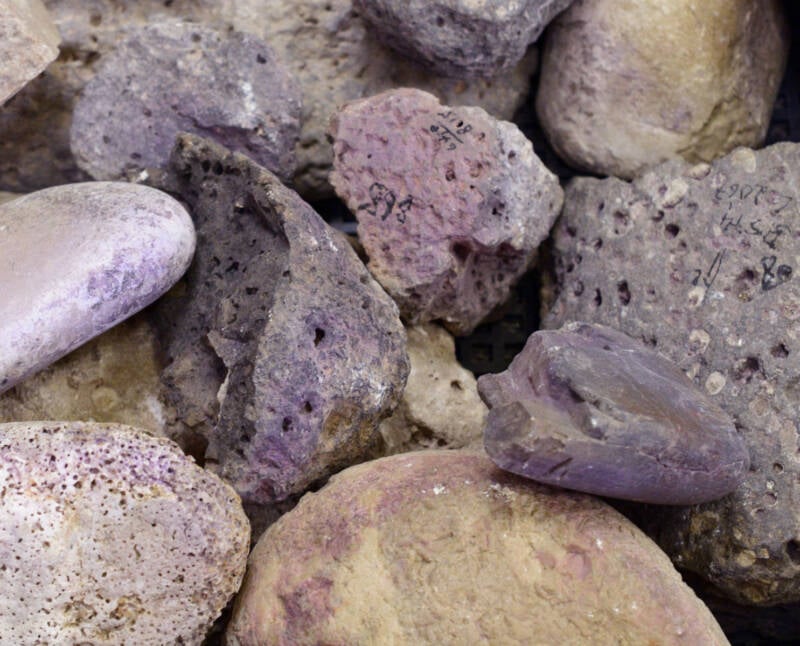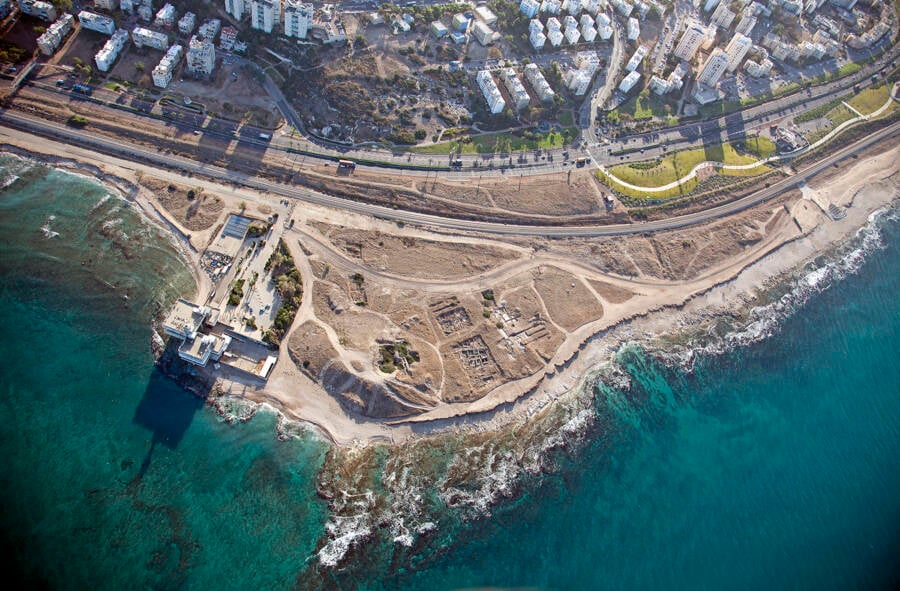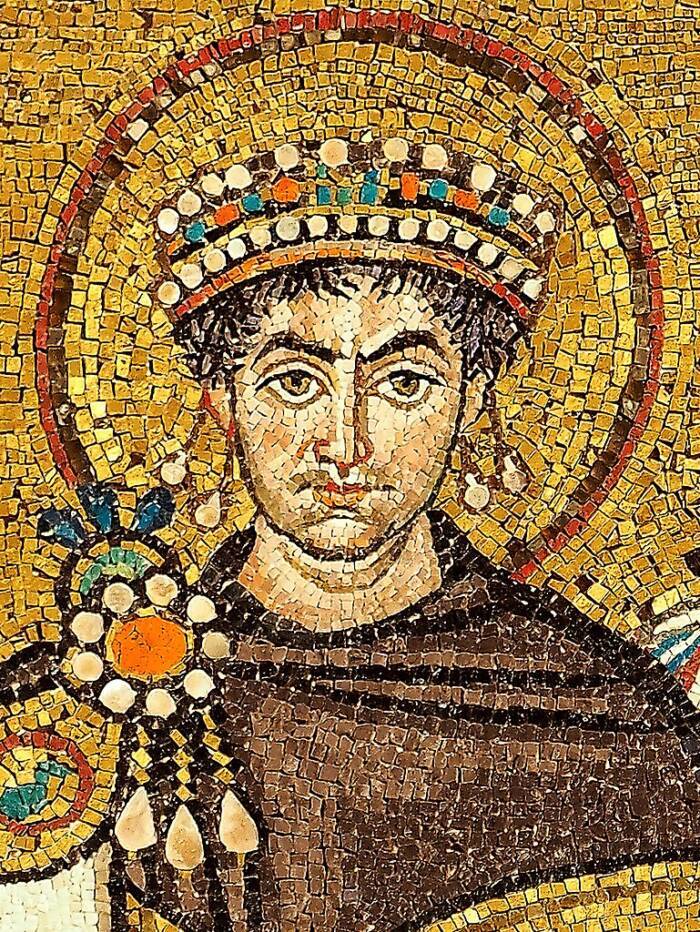Across the ancient Mediterranean, few luxury commodities were as prized, rare, and expensive as Tyrian purple, a dye used in the clothing and furnishings of wealthy elites. Now, archaeologists in northern Israel have uncovered what could be history's only known large-scale production facility for this treasured dye.

Maria Bukin; PLOS ONEStone tools marked with Tyrian purple dye residue found at Tel Shiqmona.
In the ancient world, purple was the color of royalty and riches. Roman elites wore purple, and the Egyptian pharaoh Cleopatra even painted the sails of her ships purple. Making the era’s most prized purple dye — known as Tyrian purple — was a painstaking process, and researchers have just discovered one of the main manufacturing hubs where such work once took place.
During excavations along the coast of Tel Shiqmona in northern Israel, archaeologists have uncovered a 2,900-year-old factory where this dye was produced. Huge vats, stained stone tools, and hundreds of shells from sea snails (the dye’s most important ingredient) speak to the incredible labor that took place to produce Tyrian purple for the world’s ancient elites.
The Tyrian Purple Dye Factory Found On The Coast Of Israel

Hecht Museum, University of HaifaThe Tel Shiqmona archaeological site where the Tyrian purple dye factory was discovered.
As described in the journal PLOS ONE, the dye factory was discovered at the Tel Shiqmona archaeological site in northern Israel.
“The discovery of the factory wasn’t the result of a single dramatic moment — it was more of a gradual realization based on several clues,” study lead author Golan Shalvi explained to All That’s Interesting in an email. “We already knew the site had been associated with purple dye production, as sherds with visible traces of dye were uncovered during excavations in the 1960s and 1970s… The breakthrough came when I began processing materials from the earlier excavations and started to understand the scale of the phenomenon — both in terms of quantity and the long time span it represented. That’s when things became truly surprising.”
Indeed, archaeologists discovered evidence of the production of Tyrian purple on a massive scale. The dye is made from sea snail (Hexaplex trunculus) mucus, and archaeologists discovered 400 sea snail shells at the site, as well as 100-gallon ceramic vats and a variety of stone tools. They realized that the dye factory at Tel Shiqmona was enormous — perhaps one of the largest of the ancient world.
“In fact,” Shalvi told All That’s Interesting, “Tel Shiqmona yielded more purple-stained pottery fragments than all other ancient sites combined.”
The site’s location, while disadvantageous for trading, was ideal because of its “access to the marine resource essential to dye production: murex snails.”

Ayelet Gilboa; PLOS ONETyrian purple is painstakingly made from the mucus of sea snail shells, hundreds of which were found at the Tel Shiqmona site.
The factory at Tel Shiqmona produced purple dye for some 500 years and, between roughly the 10th to early 7th century B.C.E., it was “the only site around the Mediterranean with clear evidence of significant-scale production,” according to Shalvi.
“We therefore assume it was the main supplier of dyed wool for elite and royal weaving centers across the region — Philistia, Israel, Phoenicia, Moab, Edom, Damascus, Cyprus, etc,” Shalvi told All That’s Interesting. “The site was probably a key economic hub for the Kingdom of Israel and later the Assyrian Empire, both of which ruled the area at different times. Its repeated destruction and subsequent rapid reconstruction suggest a strong motivation to keep it functioning.”
Indeed, from the Israelites and the Phoenicians to the Assyrians and the Romans, the treasured dye known as Tyrian purple was a mainstay in the ancient world.
The Colorful History Of Tyrian Purple, History’s Most Expensive And Prized Dye
The history of Tyrian purple (also known as Mycenaean purple) possibly began as early as the 16th century B.C.E., when it was first produced in the Phoenician city of Tyre (in present-day Lebanon). Phoenician mythology states that the god Melqart discovered the dye after his dog bit a sea snail during a walk on the beach, and emerged from the encounter with a purple snout.

Public DomainThe Phoenician myth was adapted by the Greeks, who claimed that Hercules discovered the dye while walking with his dog.
Tyrian purple was painstakingly produced by gathering sea snails (Hexaplex trunculus, Bolinus brandaris, or Stramonita haemastoma). Ancient people either crushed the snails or extracted their glands, which were then salted, fermented, cooked, and reduced.
“It is considered of the best quality when it has exactly the colour of clotted blood, and is of a blackish hue to the sight,” Roman writer Pliny the Elder once wrote of Tyrian purple, “but of a shining appearance when held up to the light; hence it is that we find Homer speaking of ‘purple blood.'”
This dye was highly coveted by those who could afford it — in the fourth century C.E. one pound of Tyrian purple was worth three times as much as gold — and it swiftly became the color of ancient elites. And the elites guarded their color with passion. Indeed, the Roman emperor Caligula grew so enraged when the king of Mauretania wore purple to meet with him that Caligula had the king killed.
But as time passed, the passion for Tyrian purple faded. At Tel Shiqmona, the invading Babylonians didn’t bother to restore the site after military campaigns left it in ruins around 600 B.C.E. The factory’s production ceased, and, eventually, even the exact method of creating the dye became lost to the ages.

Petar Milošević/Wikimedia CommonsA sixth-century mosaic of Emperor Justinian I, wearing Tyrian purple.
As such, the purple dye factory discovered in Israel belongs to a long and ancient tradition. In antiquity, there were few things as coveted as Tyrian purple. And for hundreds of years, workers in Tel Shiqmona toiled to make it, collecting snails, crushing their shells, and fermenting their glands until they had produced a dye the color of “clotted blood,” a rich hue that we can still see on ancient artifacts nearly three millennia later.
After reading about the Tyrian purple factory that was unearthed along the coast of northern Israel, discover the story of Egyptian blue, the precious dye used in everything from mummy portraits to Renaissance masterpieces. Then, learn about the discovery of Tyrian purple in England in 2024.





